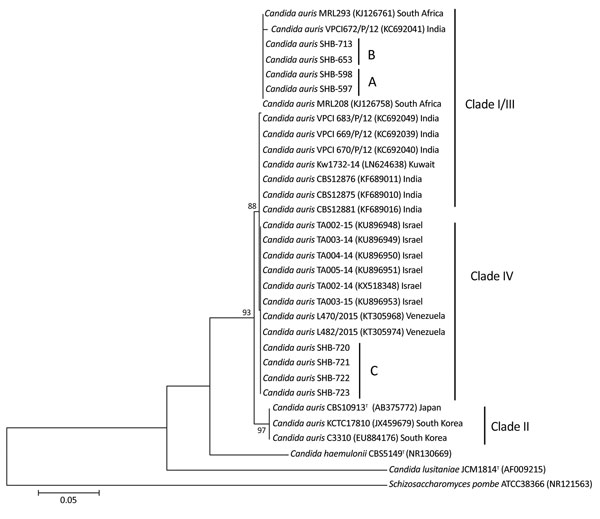Volume 24, Number 4—April 2018
Research Letter
Candida auris Infection Leading to Nosocomial Transmission, Israel, 2017
Figure

Figure. Phylogenetic analysis of Candida auris strains from 2 patients in Israel. Tree was generated using the neighbor-joining method. Internal transcribed spacer sequences of C. auris strains were aligned with the C. auris type strain CBS5149T, strains previously isolated in Tel Aviv (TA002-TA005), and additional clinical strains available from GenBank. A indicates isolates from patient A, who was transferred from South Africa to Sheba Medical Center in Israel in late 2016. B indicates isolates from patient B, who was admitted to the same unit 6 weeks after the discharge of patient A, in January 2017; SHB-713 is an environmental sample from the floor near patient B’s bed. C indicates isolates from sputum and urine from 2 different patients infected with C. auris in Sheba Medical Centerl during 2017 (SHB-720–723). The percentages of replicate trees in which the associated taxa clustered together in the bootstrap test (500 replicates) are shown next to the branches. GenBank accession numbers are given in parentheses, and countries of origin are listed. C. lusitaniae JCM1814T and Schizosaccharomyces pombe ATCC38366 were used as outgroups. Scale bar indicates nucleotide substitutions per site.